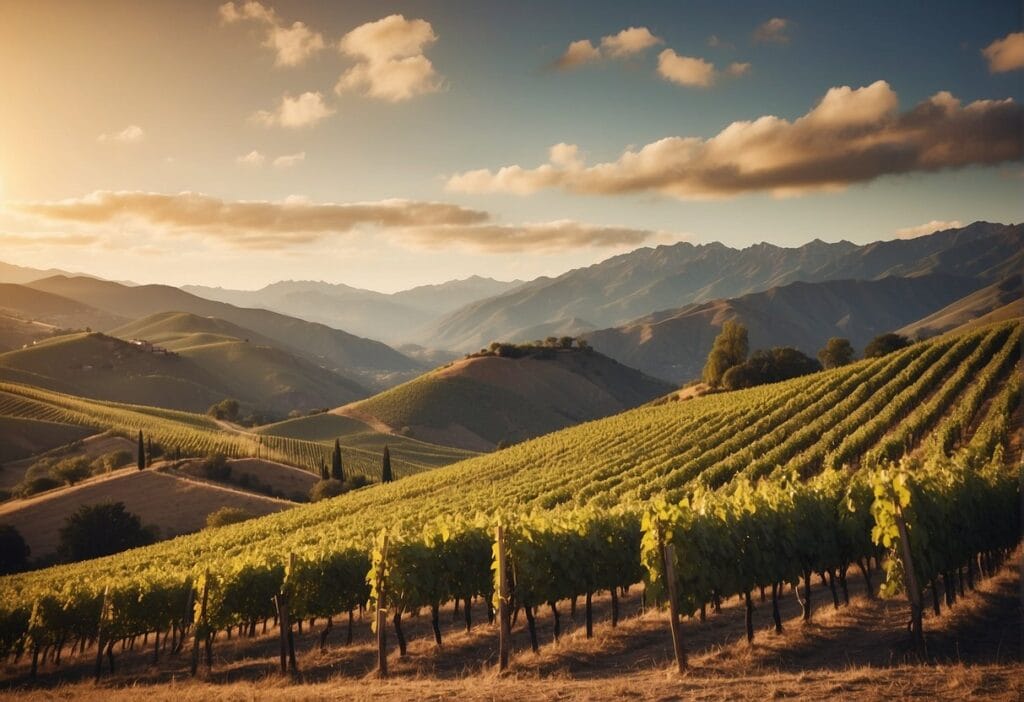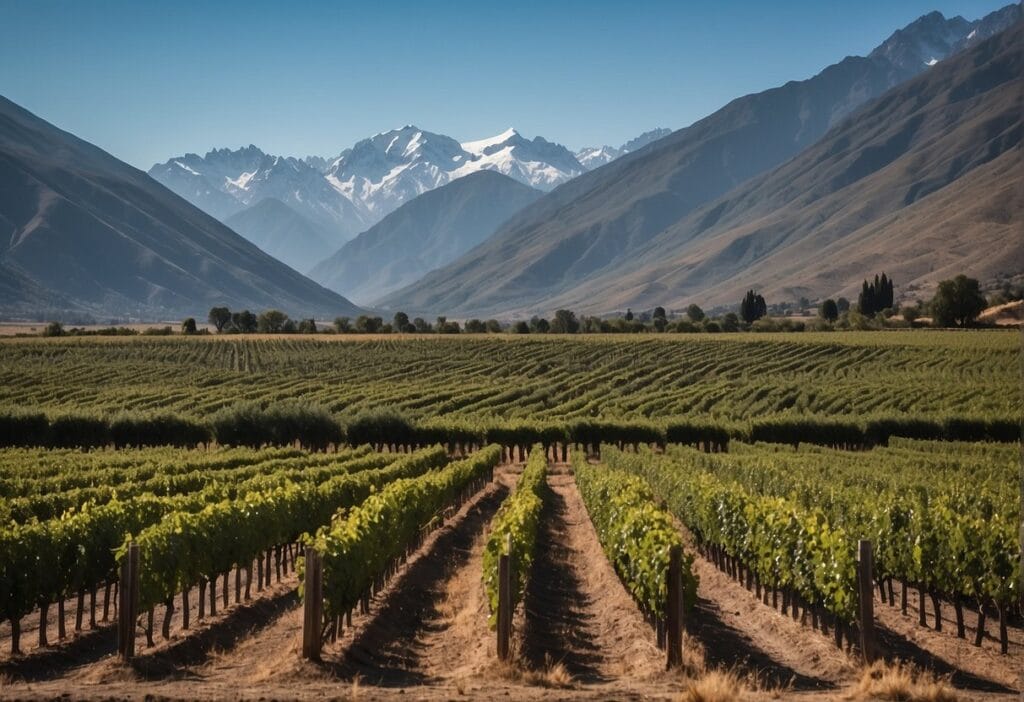Nestled on the eastern side of central Italy, the Marche Wine Region is a treasure trove of vinous delights that captures the essence of Italy’s diverse enological landscape. Marche embraces the Adriatic Sea with a blend of coastal and inland terrains, offering a unique climate that is ideal for viticulture. The region is famed for its crisp and aromatic white wines like Verdicchio, reflecting the influence of the maritime breezes.
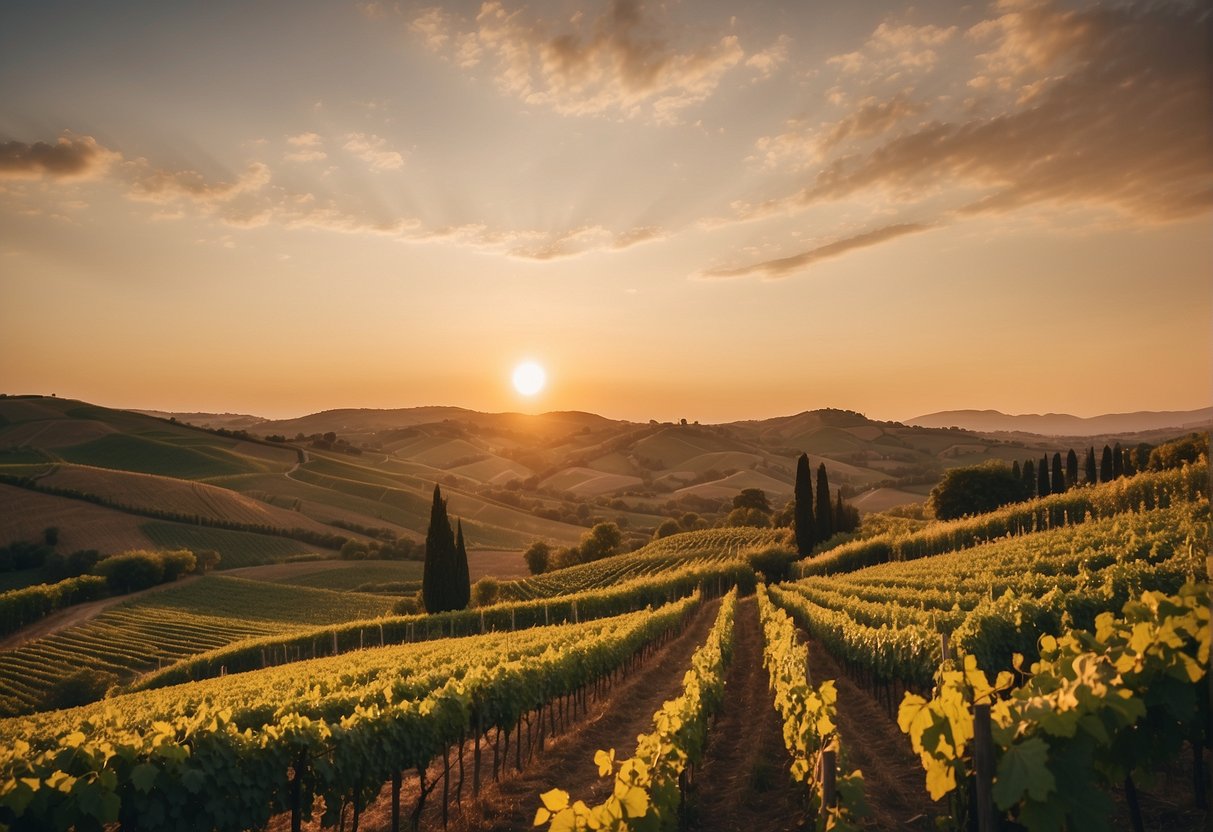
Meanwhile, the Montepulciano grape delivers bold and robust reds, rooted in Marche’s rich winemaking tradition.
The tapestry of Marche’s winemaking history is woven with threads of ancient practices and modern innovations, providing an intriguing journey from the past to the present.
This unfurls across a stunning backdrop of rolling hills, which together with a favorable climate, forms the terroir that gives Marche wines their distinctive character. The wine appellations and regulations within this region ensure the highest standards are met, preserving the integrity of Marche’s wine culture.
Key Takeaways
- The Marche Wine Region is distinguished by its coastal and inland climate, conducive to producing exemplary white and red wines.
- A historic wine-producing area, Marche offers a harmonious blend of traditional and contemporary winemaking techniques.
- Strict appellation controls and a focus on the unique terroir ensure the production of high-quality, distinctive wines that represent the essence of Marche.
Geography and Climate
The Marche wine region brings together the enriching elements of its location, from the rolling Apennine Mountains to the breezy Adriatic Sea, to create a distinct climatic identity that influences the character of its wines.
Location and Landscape
Marche is nestled in central Italy, bordered by the Apennine Mountains to the west and the Adriatic Sea to the east. This positioning crafts a picturesque landscape ripe for viticulture, with vineyards gracing the hillside slopes and valleys, benefitting from both the protective formations and the nutrient-rich soils.
Weather Influences
Your experience of Marche wine is shaped by its climate, characterized by a blend of maritime and continental influences. Summertime brings warmth and illumination, while winters remain generally mild. However, the Apennines can introduce cooler air, impacting the timing of grape ripening and the subtleties of wine flavor profiles.
Adriatic Proximity
The Adriatic Sea fosters a moderate climate along the coastline, acting as a temperature stabilizer for the nearby vineyards. Gentle sea breezes help to moderate the summer heat and distribute air moisture evenly, which is essential for healthy grape growth and maintaining the delicate balance needed for premium winemaking.
History of Marche Viticulture
The Marche wine region boasts a rich tapestry of viticulture, tracing back to ancient civilizations and enduring through various historical shifts. Here, you’ll explore the deep roots of winemaking that have grown with the Marche Region across millennia.
Ancient Traditions
Viticulture in the Marche region can be reminisced as an ancient practice, with Etruscans cultivating vines well before the Romans admired the area’s fine wines. You’ll find that Rosso Piceno DOC, one of the appellation’s distinguished wines, has roots winding back to these times. Embedded in the Marche’s hilly terrain, the vineyards foster grapes that have been part of local heritage since times that predate the Roman Empire.
Historical Influences
Your understanding of Marche’s winemaking is incomplete without acknowledging the influence of the Romans and Lombards. The Romans contributed significantly to the development of viticulture in the region, their expertise in wine production contributing to the historical eminence of the area.
Post the Roman period, the Lombards continued to shape the wine landscape during their dominion. The confluence of these cultures over time has sculpted a distinct winemaking tradition in the Marche Region, where modern practices are infused with historical essence.
Grape Varieties and Wines
In the Marche wine region, you’ll encounter a captivating tapestry of grape varieties, each contributing to the region’s unique vinous portfolio. Here’s an exploration of the key cultivars that shape Marche’s wine landscape and the distinctive wines they produce.
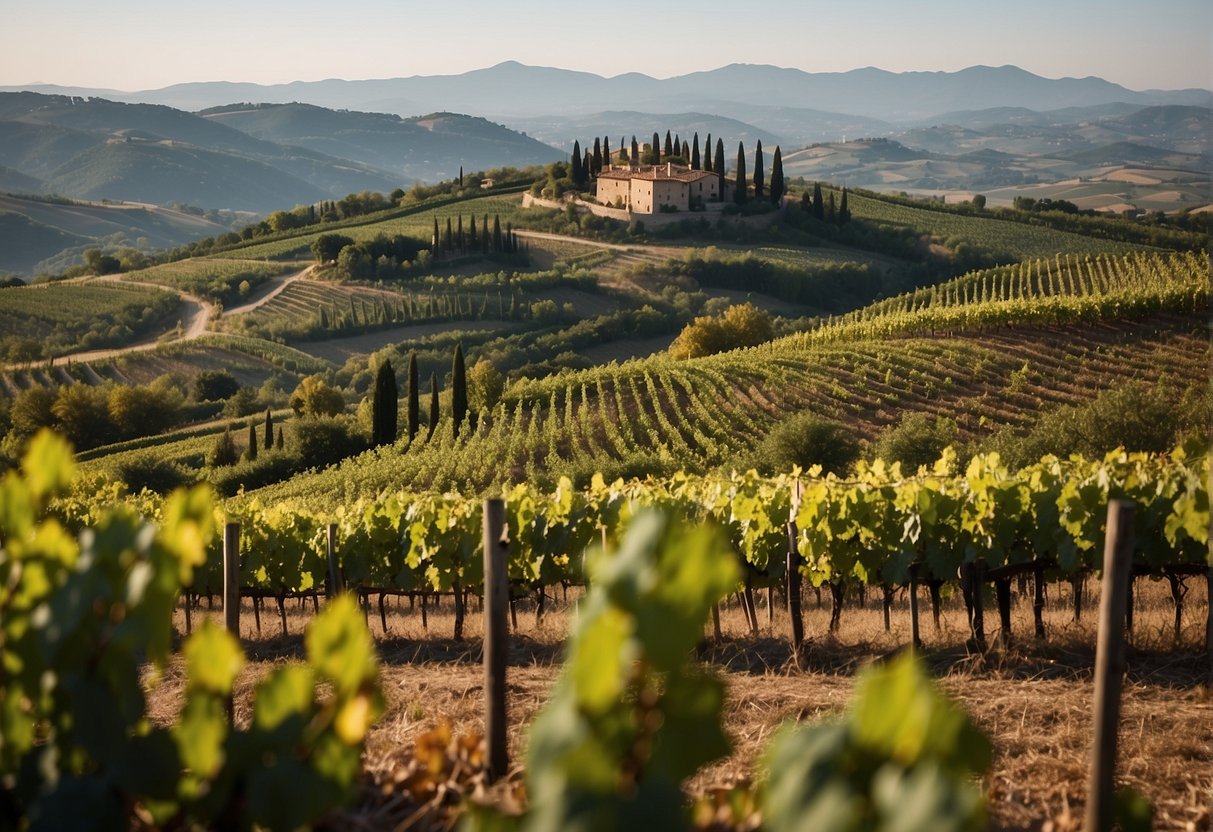
Red Grape Cultivars
Montepulciano and Sangiovese are the stalwart red grapes defining the region’s red wine profile. Montepulciano thrives here, giving wines with robust tannins and depth, while Sangiovese imparts a balance of acid and elegance. Rosso Piceno is a noteworthy wine that often blends these two varietals, showcasing the harmony of their characteristics.
Meanwhile, Lacrima—a grape that’s much rarer but cherished for its fragrant and floral wines that are unique to Marche. The region’s compelling red wines aptly reflect the diverse terroirs found across the Marche landscape.
White Grape Cultivars
Verdicchio is a star white varietal, known for its ability to age and its versatile nature. Often associated with notes of citrus and almond, Verdicchio is the backbone of some of Marche’s most esteemed whites, such as Verdicchio dei Castelli di Jesi.
Other whites like Pecorino, Trebbiano, and Bianchello offer a spectrum of flavors from the refreshingly crisp to the delicately fruity. Each variety contributes to the distinct profiles of Marche’s white wines—ranging from light and easy-drinking to complex and sophisticated.
Distinctive Wines of Marche
When exploring Marche’s wines, your journey will include the celebrated Verdicchio—ideal for those who enjoy wines that pair well with a broad range of dishes. Rosso Piceno presents red wine lovers with a harmonious blend, reflecting the best of Montepulciano and Sangiovese grapes.
Other regional gems include Vernaccia di Serrapetrona, a sparkling red, and wines from the Lacrima grape, which are commendably aromatic and seductive. The Malvasia varietal also finds its place in the region’s diverse wine landscape, often in blends where its floral qualities can shine.
Wine Appellations and Regulations
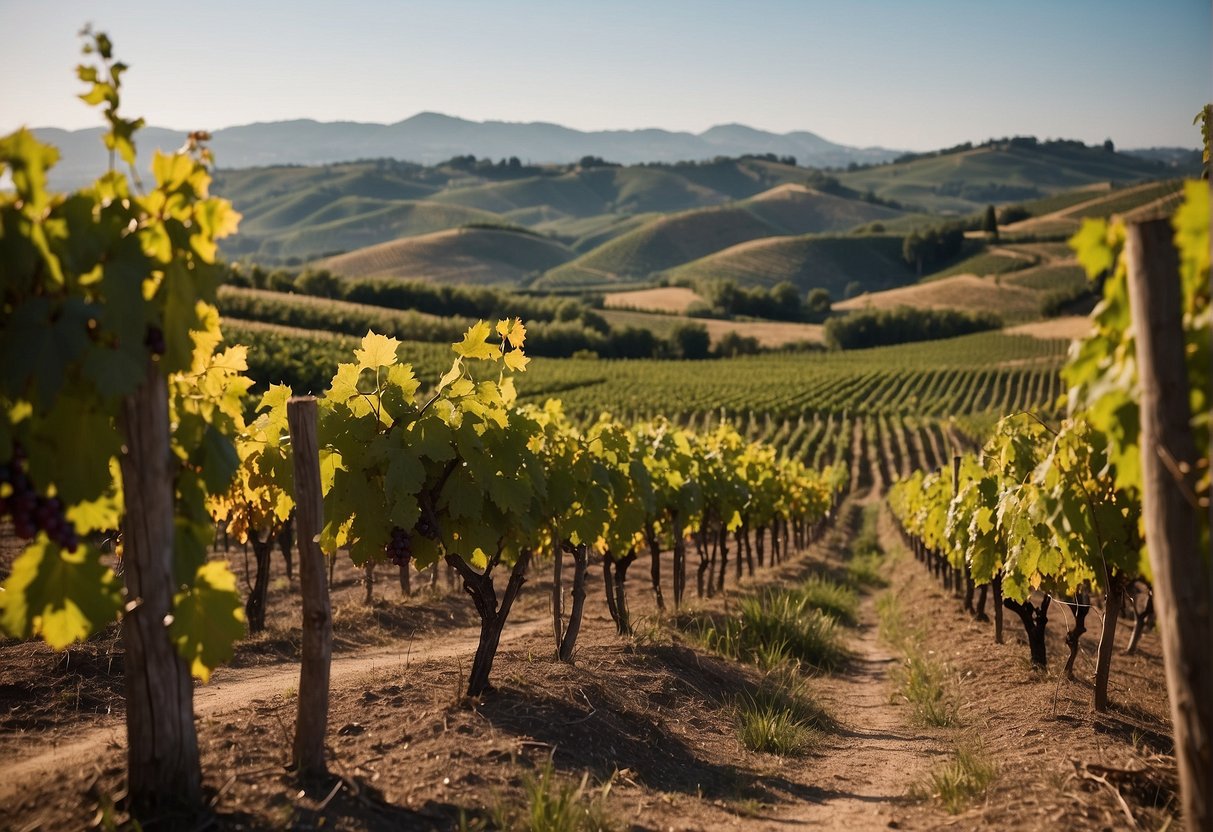
In exploring the Marche wine region, you’ll come across a rich tapestry of wine appellations—each with its own regulations to ensure quality and authenticity.
DOC and DOCG Overview
Denominazione di Origine Controllata (DOC) and Denominazione di Origine Controllata e Garantita (DOCG) are Italian wine quality assurance labels that you might have seen. They guarantee that the wines are produced within a specified region and adhere to strict quality standards regarding grape varieties and winemaking methods. A DOCG classification is a step above DOC, with more stringent controls.
Indicazione Geografica Tipica (IGT)
The Indicazione Geografica Tipica is a classification which recognizes the quality and reputation of the wines whose characteristics are linked to the geographic area where they are produced. Although IGT wines are not as strictly regulated as DOC and DOCG wines, they often allow winemakers more creativity and experimentation.
Noteworthy DOCs and DOCGs
Within Marche, you’ll find standout appellations such as the Verdicchio dei Castelli di Jesi DOCG and Vernaccia di Serrapetrona DOCG, beloved for their high-quality wines. The Rosso Conero DOC is esteemed for robust red wines made primarily from the Montepulicano grape. If you enjoy white wines, Bianchello del Metauro and Verdicchio di Matelica Riserva offer delightful options with zesty and floral qualities.
Not to be missed are Lacrima di Morro, an aromatic red wine, and the bold Offida Rosso. There is also Rosso Piceno DOC, a versatile red that pairs beautifully with a variety of dishes. And let’s not forget about the flavorful and full-bodied Rosso Cònero which embodies the character of this unique coastal region.
Terroir and Winemaking
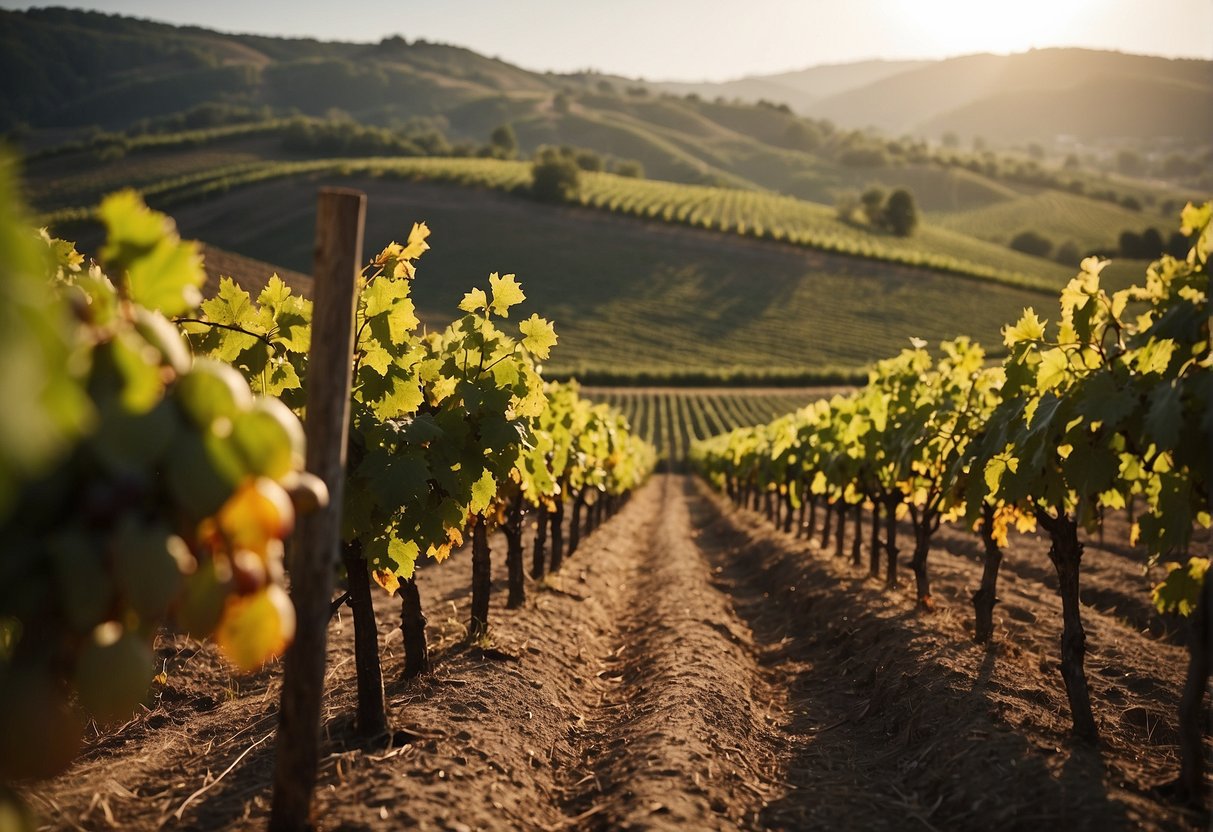
Exploring the Marche wine region, you’ll discover that its unique terroir and inventive winemaking practices have shaped its reputation for distinctive wines. The region’s terroir—encompassing soil composition, traditional techniques, and modern innovations—plays a crucial role in the production of Marche’s celebrated wines.
Soil Composition
The soils of the Marche wine region are predominantly composed of clay and calcareous materials with patches of limestone. This rich variety contributes to the characteristic minerality and complexity of the region’s wines. Such soils are especially favorable for grape varieties like Verdicchio and Montepulciano, which thrive under these conditions.
- Clay soils retain water, which is beneficial during dry spells.
- Calcareous and limestone soils contribute to a wine’s aromatic profile and structure.
Traditional Techniques
Within the Marche, centuries-old winemaking traditions are held in high esteem. Practices like hand-picking grapes and using gentle pressing methods have been passed down through generations. These techniques ensure that the grape varieties retain their intrinsic qualities, reflecting the terroir in each bottle.
- Hand-picking grapes helps maintain the fruit’s integrity.
- Gentle pressing preserves the delicate flavors and aromas of the grapes.
Modern Innovations
Concurrent with these time-honored practices, modern innovations in viticulture and winemaking have been embraced.
Precision agriculture and controlled fermentation are just two examples of how winemakers in Marche are enhancing the quality of their wines while still respecting the region’s terroir.
- Innovative viticulture techniques optimize the health and quality of the grapes.
- Controlled fermentation technologies allow for more consistency in winemaking.
Wine Tourism and Culture
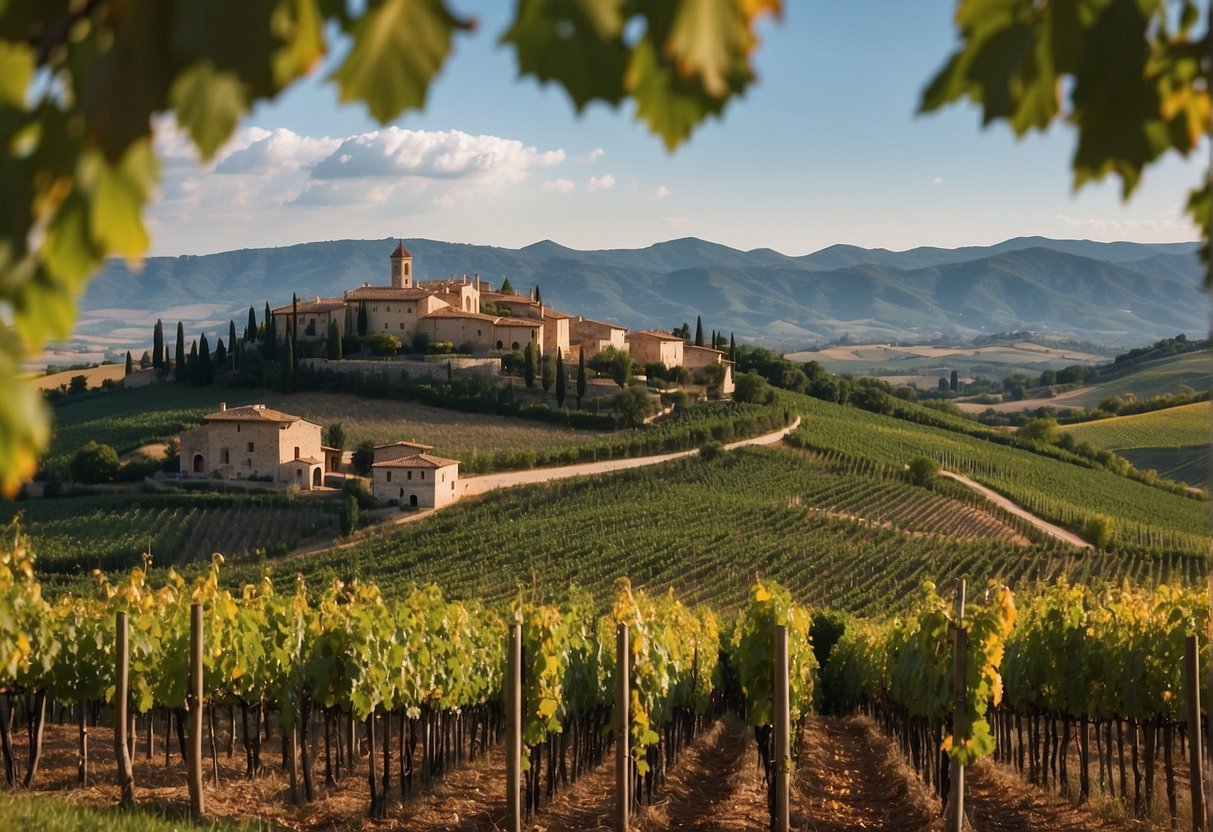
The Marche Wine Region offers an immersive experience for wine lovers, combining the pleasures of tasting with the rich tapestry of local culture.
Here you can indulge in guided tours, savor the regional Pecorino cheese, and visit renowned vineyards and wineries, such as Azienda Agraria Guerrieri and Tenute Muròla.
Winery Visits
Guided Tours: You’ll have the opportunity to tour esteemed wineries like Azienda Agraria Guerrieri, which boasts a tradition of family winemaking, and Tenuta Santi Giacomo e Filippo, where organic practices bring out the best in their wines.
These tours often lead you through lush vineyards, providing insight into the winemaking process from grape to glass.
Tenute Muròla: Another gem is Tenute Muròla, set amidst the rolling hills. Here, you can experience the passion behind their winemaking, with a guided tour that often culminates in a stunning tasting room with panoramic views.
Gastronomy Pairings
Pecorino Cheese: An essential part of the experience is pairing the region’s wines with local delicacies.
Pecorino cheese, with its salty, tangy flavor, pairs wonderfully with the crisp white Verdicchio, enhancing your tasting experience and offering a true taste of Marche culture.
Vineyard Picnics: Some vineyards, like Rio Maggio, invite you to enjoy a picnic amidst the vines.
It’s a magical way to combine the flavors of the region with a serene setting, creating a memorable gastronomic adventure.
Wine Events and Festivals
Wine festivals in Marche are vibrant celebrations where you can sip and savor the local vintages surrounded by music and tradition.
Look out for events that bring together wine lovers, producers, and regional artisans, offering a full-bodied experience of Marche’s vinicultural charm.
Wineries and Producers
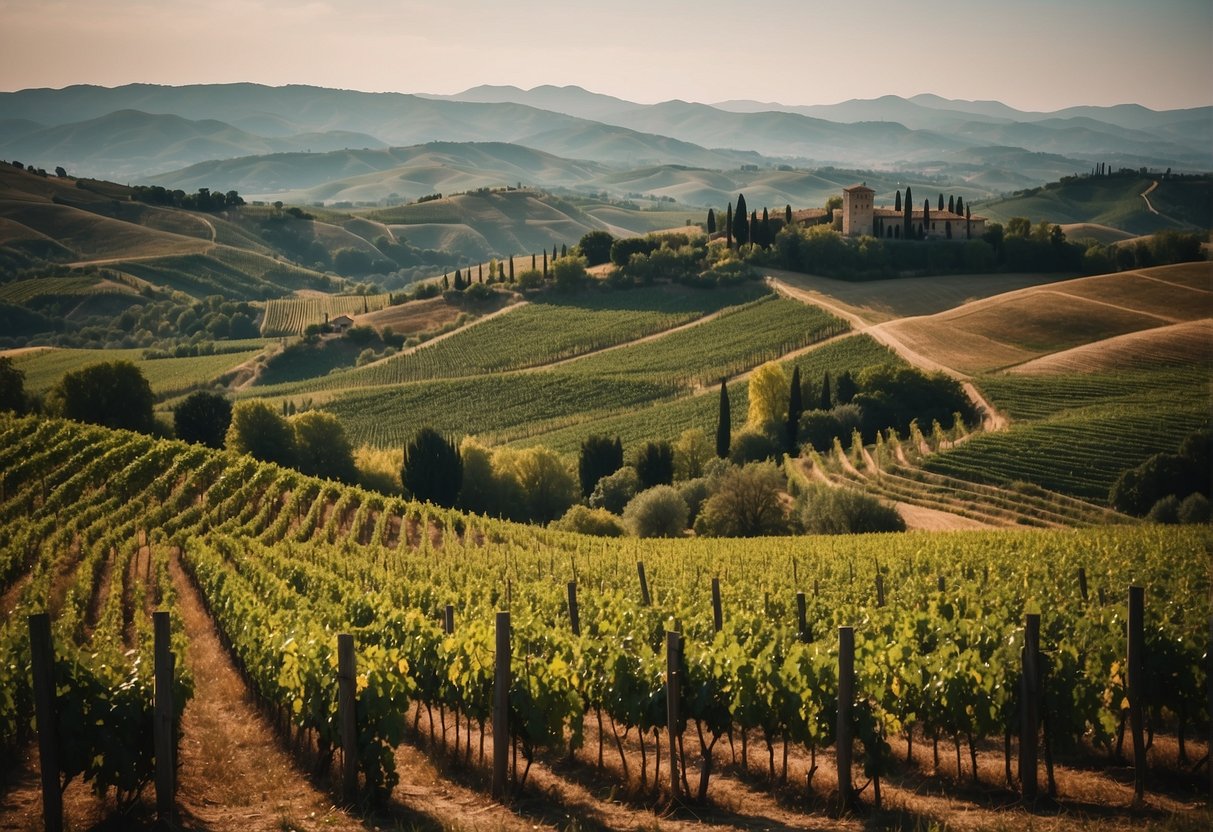
In the rolling landscapes of Marche, you’ll find a vibrant tapestry of wineries and producers that uphold a rich tradition of viticulture.
Here, every Cantina tells a unique story of the land, while innovative winemakers bring a dynamic edge to centuries-old practices.
Notable Wineries in Marche
Vallerosa Bonci: This winery, renowned for its quality Verdicchio wines, embraces the ideal terroir found in Marche. Their dedication to creating expressive wines truly showcases the region’s heritage. You can find more information about their celebrated wines here.
La Casa Nella: Though not listed in the search results, traditionally known for its approach to viticulture, La Casa Nella would be a hypothetical example of a winery that combines time-honored methods with modern techniques to produce exceptional wines reflective of Marche’s terroir.
Innovative Winemakers
Terre di Serrapetrona: Delving deep into the roots of the past, this winery uncovers its rich history tracing back to the time of the Roman Empire.
Embracing both tradition and innovation, they’re a testament to the enduring spirit of Marche’s winemaking. Discover their story and wines here.
Terre di San Ginesio srl: By focusing on local grape varieties and advancing viticulture practices, this producer creates distinct wines that speak to both the historical character and the forward-thinking approach of the Marche wine region. Learn more about their offerings here.
Frequently Asked Questions
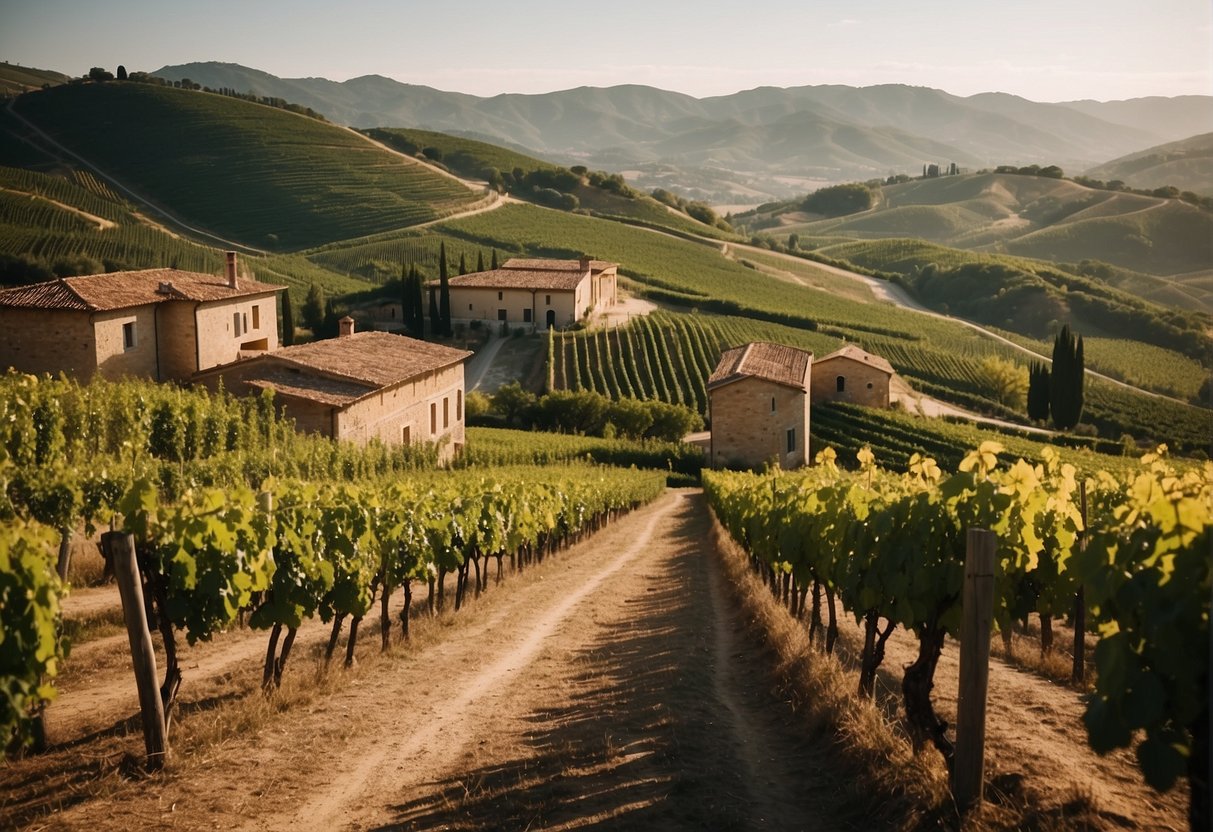
In this section, you’ll find answers to some common queries about the Marche wine region to enhance your knowledge and aid in planning a delightful wine-tasting adventure.
What types of grapes are commonly cultivated for wine-making in the Marche region?
The Marche region is renowned for its Verdicchio and red Montepulciano and Sangiovese grapes.
These varieties form the backbone of the region’s wine production, offering a diverse palette of flavors.
How does the Marche region’s climate influence its wine production?
The varied microclimates across Marche, influenced by its proximity to the Adriatic Sea and the Apennine Mountains, create ideal conditions for viticulture.
These conditions yield wines with distinctive complexity and character.
What distinguishes Marche’s Verdicchio wines from other Italian white wines?
Marche’s Verdicchio wines are prized for their high acidity and a distinctive almond note, setting them apart from other Italian whites.
They are also known for their ability to age well and their versatility in pairing with food.
Can you suggest some must-visit wineries for someone touring the Marche wine region?
Absolutely! A visit to wineries such as Rio Maggio or La Casa Nella assures an immersive experience into the region’s winemaking heritage, surrounded by picturesque vineyards and olive groves.
What are the characteristics of red wines produced in the Marche region?
Red wines from Marche often exhibit rich berry flavors and earthy undertones.
Rosso Conero and Rosso Piceno are noteworthy examples that express the robust character of the Montepulciano grape.
How does Marche wine compare to other Italian wine regions in terms of taste and variety?
Marche wines stand out for their authentic expression of terroir and unique varietals. The acclaimed Verdicchio is one such example. They offer a spectrum of tastes ranging from zesty whites to full-bodied reds. This variety rivals the diversity found in more famous Italian wine regions.
